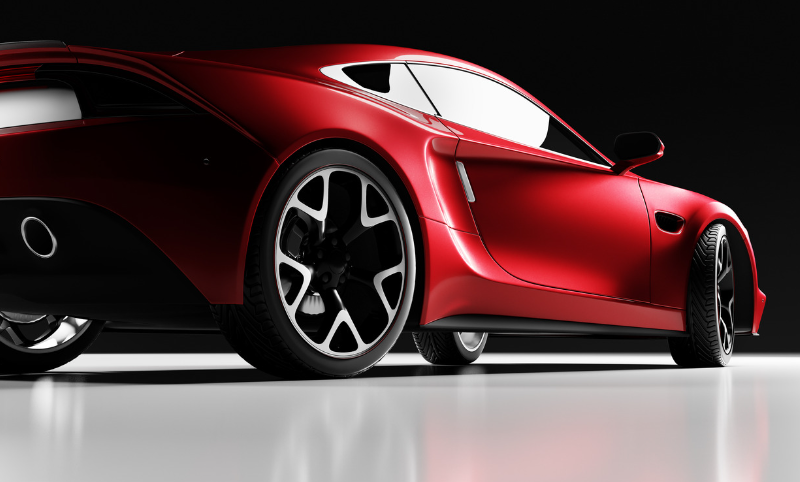Hybrid cars are becoming increasingly popular with each passing day and for good reason. They offer numerous benefits over traditional gasoline-powered vehicles, including better fuel efficiency and lower emissions. However, driving a hybrid car can be slightly different from driving a regular one. In this blog post, we will take a closer look at what hybrid cars are and their benefits. We will also provide you with all the information you need on how to drive one smoothly, including the different drive modes available in hybrid cars.
Additionally, we will cover advanced technologies in hybrid vehicles, compare different types of electric vehicles, discuss factors that affect the driving range of a hybrid car and explore if they are the future of transportation. Lastly, we will provide troubleshooting tips to common issues with hybrid cars and maintenance tips to ensure your vehicle runs smoothly for years to come.
Understanding Hybrid Cars
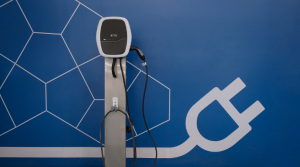
Hybrid cars, a combination of gasoline and electric power, aim to enhance fuel efficiency. They come in different types, such as mild, full, and plug-in hybrids. Driving a hybrid car requires some adjustments in driving habits. Key tips include utilizing regenerative braking, maximizing electric mode usage, and maintaining proper tire pressure. It is essential to familiarize yourself with your hybrid automatic car’s specific features and controls for safe and efficient driving. By incorporating these strategies, you can make the most of your hybrid vehicle’s eco-friendly capabilities.
Benefits of Having a Hybrid Car

Having a hybrid car offers numerous benefits that make it an attractive option for eco-conscious individuals. One of the key advantages is improved fuel efficiency, as hybrid cars combine a traditional gasoline engine with an electric motor, resulting in reduced fuel consumption and lower carbon emissions. This saves money on fuel costs and helps reduce air pollution and combat climate change.
Additionally, hybrid cars often have regenerative braking systems, which convert kinetic energy into electricity to recharge the battery, further increasing energy efficiency.
Moreover, many governments offer incentives such as tax credits or rebates for purchasing hybrid cars, making them even more affordable. Overall, owning a hybrid car is a smart financial decision and a step towards a greener and more sustainable future.
How to Drive a Hybrid Car in the UK?
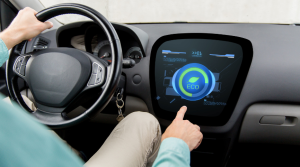
A hybrid car is similar to a traditional gasoline-powered car but with a few key differences. Here are some tips for driving a hybrid car:
1. Familiarize yourself with the hybrid system: Hybrid cars use both an internal combustion engine and an electric motor. Take the time to understand how the hybrid system works and how it switches between electric and gasoline power.
2. Practice smooth acceleration and braking: Hybrids are designed to maximize fuel efficiency, so avoiding sudden acceleration or braking is important. Gradually press on the accelerator pedal to smoothly increase speed, and anticipate stops ahead of time to avoid harsh braking.
3. Utilize regenerative braking: Hybrid cars have regenerative braking systems that convert kinetic energy into electricity to charge the battery. When you brake or decelerate, the electric motor acts as a generator, capturing energy that would otherwise be lost as heat. This helps extend the range of the electric motor.
4. Monitor your fuel efficiency: Most hybrid cars have real-time displays showing how efficiently you drive. Use this information to adjust your driving habits and maximize your fuel economy.
5. Take advantage of eco-friendly features: Many hybrid cars have additional features that can help improve fuel efficiency, such as eco mode or EV mode (which allows you to drive solely on electric power for short distances). Familiarize yourself with these features and use them when appropriate.
Different Drive Modes in Hybrid Cars
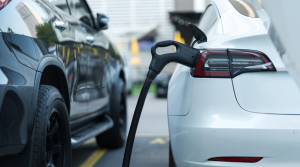
Hybrid cars have three different drive modes- electric, gas, and a combination of both. Each mode has its own benefits and drawbacks, so it’s important to know when to use each one.
1. Electric Mode
Electric mode is the most efficient way to drive a hybrid car. The car will automatically switch to electric mode when it’s not under heavy acceleration or going uphill. In electric mode, the car uses battery power to move, which means there are no emissions from the tailpipe. The downside of electric mode is that it has a limited range – you can only travel a few miles before the battery needs to be recharged.
2. Gas Mode
Gas mode is less efficient than electric mode but has a much longer range. In gas mode, the car uses gasoline to power the engine. The upside of gas mode is that you can travel further before needing to refuel. The downside is that gas mode emits more emissions than electric mode.
3. Combination Mode
Combination mode is a mix of electric and gas power. The car will automatically switch between modes depending on your driving conditions. For example, if you’re accelerating quickly or going up a hill, the car will use more gas power; coasting or braking will use more electric power. Combination mode strikes a balance between efficiency and range, but it still emits some emissions.
Advanced Technologies in Hybrid Vehicles
Hybrid vehicles incorporate advanced technologies to enhance their performance and fuel efficiency. These include a powertrain that combines an electric motor and a gasoline engine to power the vehicle. Additionally, hybrid cars feature regenerative braking systems that convert energy into electricity, which is then used to recharge the battery. Some hybrids also have the capability to run solely on electric power for short distances. Eco-driving techniques like gradual acceleration and coasting can be used to maximise fuel efficiency. Furthermore, hybrid cars offer various charging options through a standard electrical outlet or specialized charging stations.
Comparing PHEV, BEV, and FCEV Cars

When it comes to alternative fuel vehicles, there are a few different types to choose from. PHEV, BEV, and FCEV cars all have their own pros and cons that you’ll want to consider before making a decision.
PHEV cars are powered by both gasoline and electricity, while BEV cars rely solely on battery power. FCEV cars use hydrogen fuel cells to generate electricity, which is then used to power the car.
Every kind of car has advantages and disadvantages. PHEV cars have a longer range than BEV cars since they can rely on gasoline if the battery runs out of power. However, PHEV cars are more expensive than BEV or FCEV cars.
BEV cars are cheaper than PHEV or FCEV cars but have shorter ranges since they only rely on battery power. BEV cars also take longer to charge than PHEV or FCEV cars.
FCEV cars have the longest range of the three types of alternative fuel vehicles. They also refuel quickly, similar to gasoline-powered cars. However, FCEVs are the most expensive type of alternative fuel vehicle.
What Affects the Driving Range of a Hybrid Car?
There are several factors that affect the driving range of a hybrid car, including the type of battery, the regenerative braking system, and the size of the gas tank. The type of battery used in a hybrid car will have the most significant impact on its driving range.
The gas tank size in a hybrid car also affects its driving range. A larger gas tank will allow a hybrid car to travel further before needing to be refuelled. The regenerative braking system in a hybrid car captures energy from the brakes and uses it to recharge the batteries. This can help to extend the driving range of a hybrid car.
Are Hybrid Cars the Future of Transportation?

As gas prices continue to rise and the environmental impact of traditional cars becomes increasingly clear, many car buyers are looking for more fuel-efficient options. Hybrid cars have been gaining in popularity in recent years, and it’s not hard to see why.
Hybrid cars are powered by a gasoline engine and an electric motor, making them much more efficient than traditional gas-powered cars. In addition, hybrid automobiles produce less pollution than gasoline-powered vehicles. There are a few different types of hybrid cars on the market, and each has its own benefits. For example, some hybrids can run entirely on electricity for short distances, which is great for city driving. Other hybrids have larger engines, making them better suited for long-distance highway driving.
No matter what type of hybrid car you’re interested in, there’s no doubt that they’re becoming more and more popular. With their improved fuel efficiency and reduced environmental impact, it’s easy to see why hybrid cars are the future of transportation.
Troubleshooting Common Issues with Hybrid Cars
You’re not alone if you’re having trouble with your hybrid car. Many hybrid owners have experienced common issues with their cars, and there are a few things you can do to troubleshoot the problem.
First, check the battery. If the battery is dead, it may need to be replaced. If it’s not the battery, there could be an issue with the alternator or starter.
Next, check the oil level and tire pressure. Add more oil, if the oil level is low. If the tire pressure is low, inflate the tires to the proper pressure.
If your car is still having problems, take it to a mechanic or hybrid specialist for further diagnosis.
Maintenance Tips for Your Hybrid Car
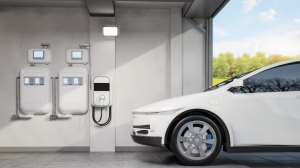
As a hybrid car owner, it’s important to be aware of the special maintenance needs of your vehicle. Here are some tips to keep your hybrid car in top condition:
- Check your battery regularly. Hybrid cars use a gas engine and an electric motor powered by a battery. It’s important to check the battery’s charge level regularly and to keep it topped up if necessary.
- Keep an eye on your tires. Because hybrid cars are heavier than traditional gas-powered cars, they put more strain on tires. Be sure to check tire pressure regularly and watch for signs of wear and tear.
- Bring your car in for regular service appointments. Just like any other vehicle, hybrid cars need regular tune-ups and oil changes. Be sure to schedule these appointments as recommended by the manufacturer.
By following these simple tips, you can help ensure that your hybrid car runs smoothly and efficiently for years to come!
Conclusion
In conclusion, driving a hybrid car offers numerous benefits, including reduced fuel consumption, lower emissions, and potential cost savings. To drive a hybrid car efficiently, it is essential to understand its unique characteristics, such as different drive modes and advanced technologies. Additionally, knowing the factors that affect the driving range of a hybrid car can help you maximize its efficiency. As hybrid cars continue to evolve, they are becoming an increasingly viable option for the future of transportation. However, it is crucial to be aware of common issues that may arise with hybrid cars and follow proper maintenance tips to ensure their longevity. By embracing hybrid technology, you can contribute to a more sustainable and eco-friendly future of transportation.





